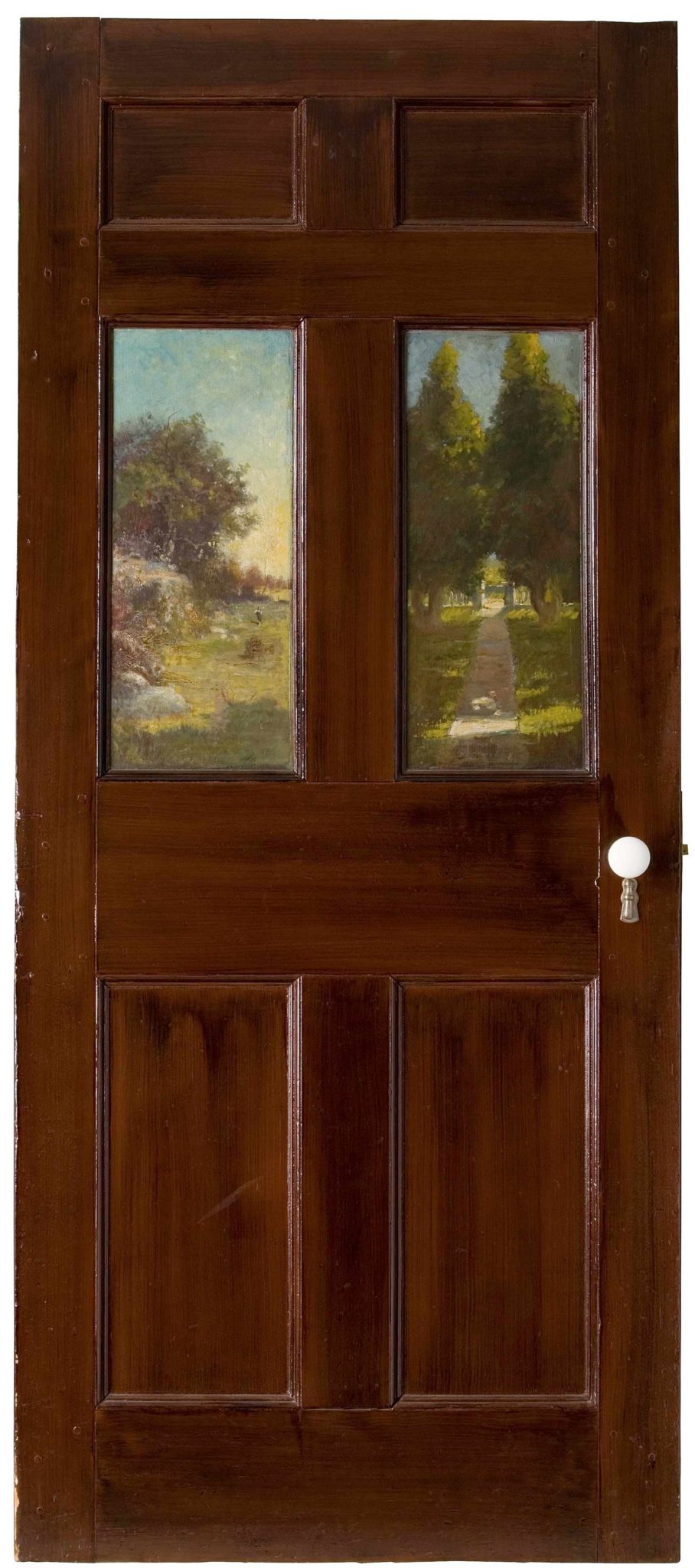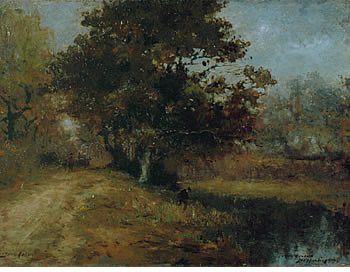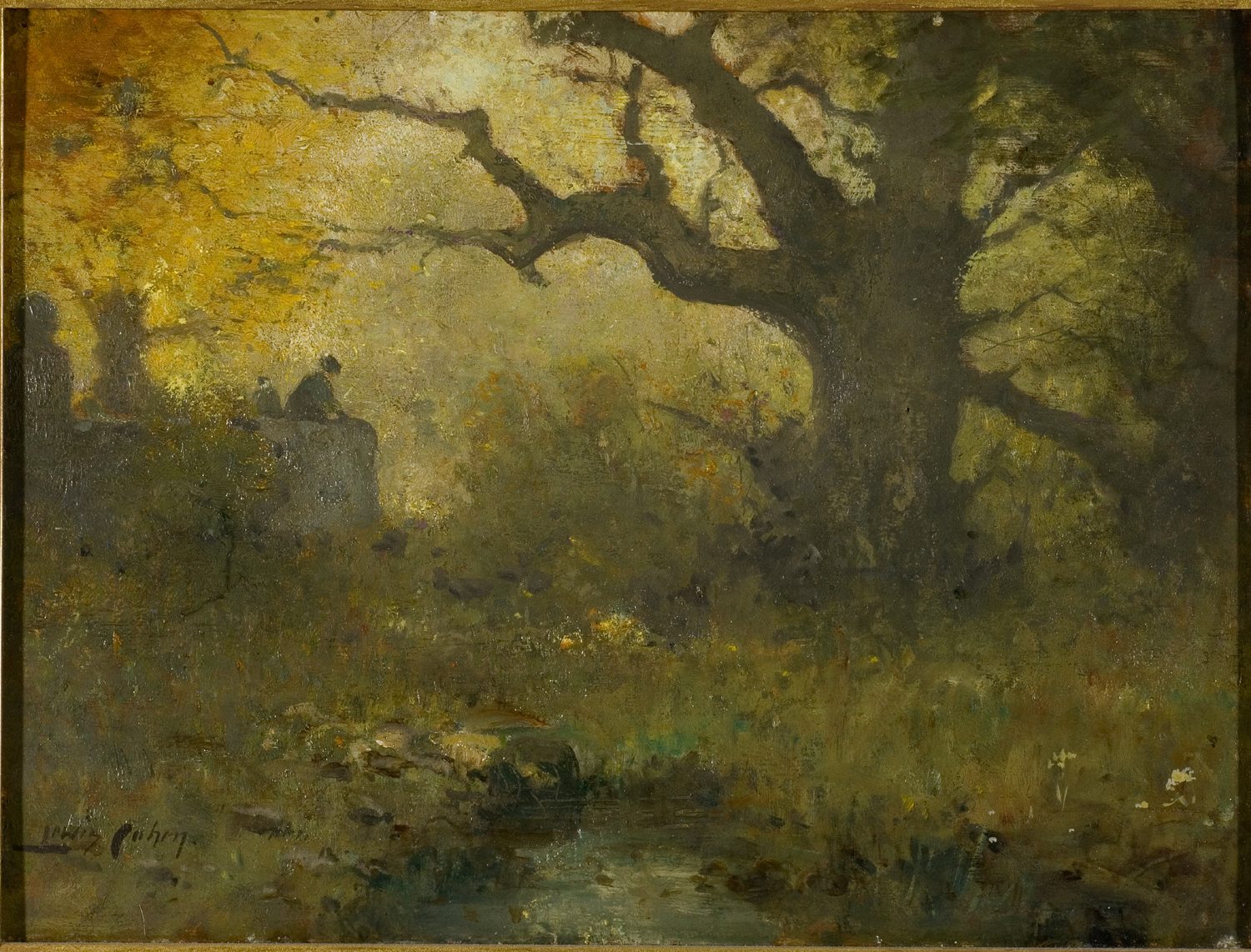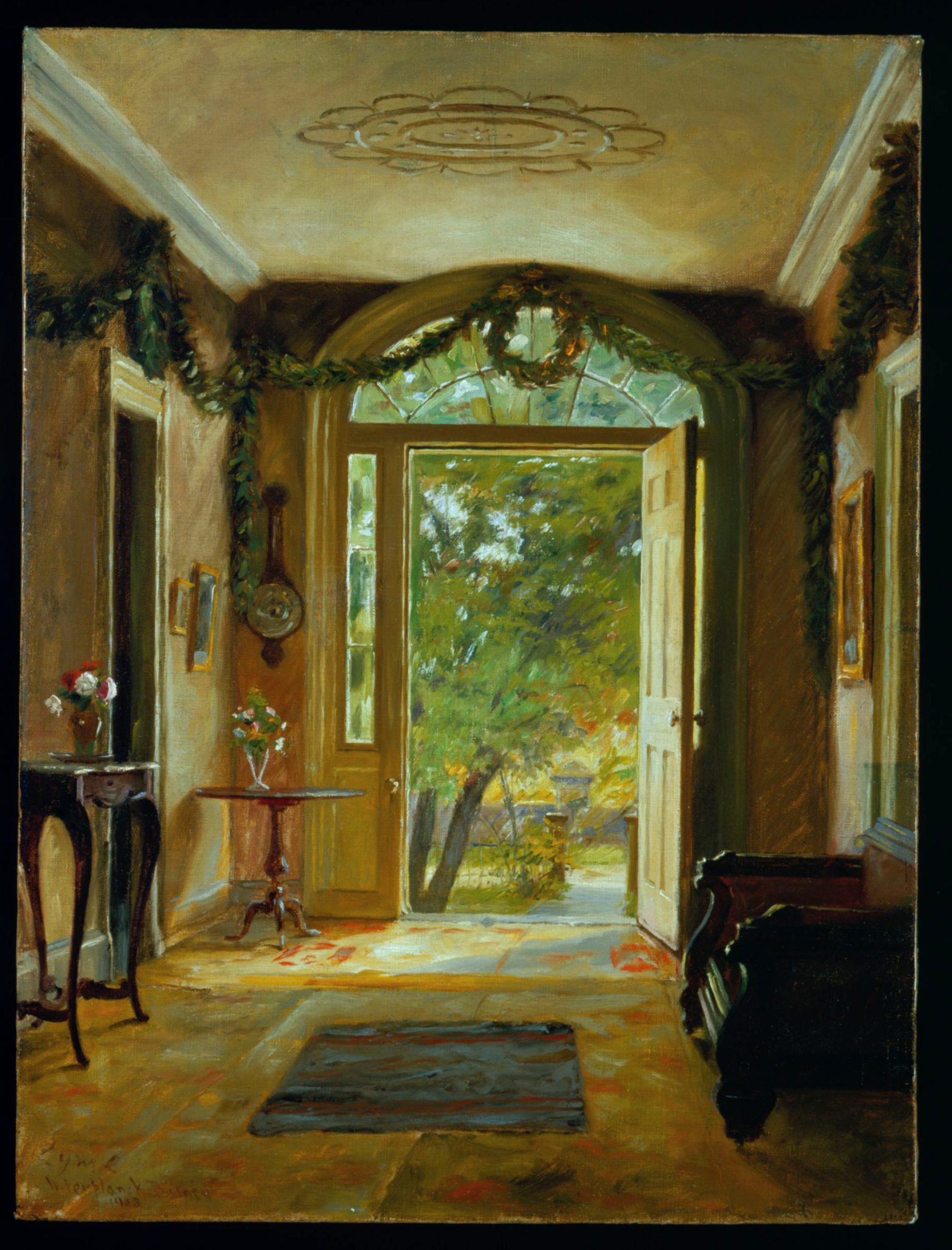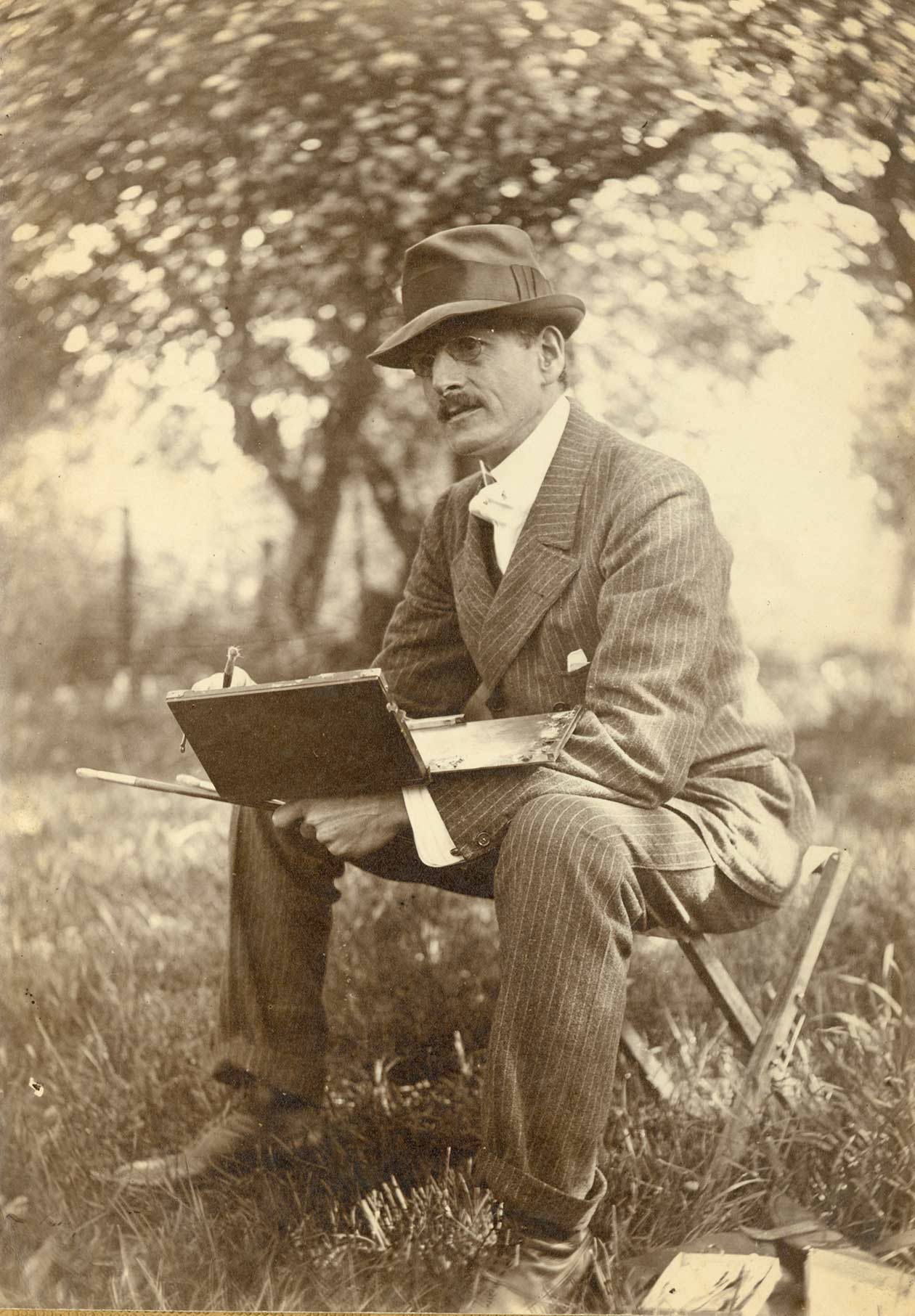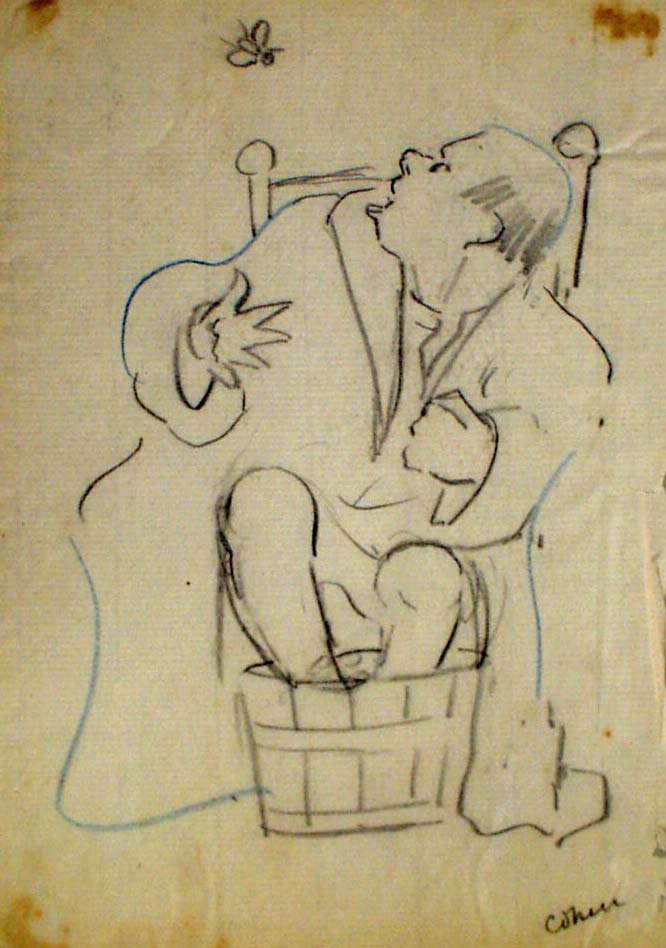Collections
In Situ: The Painted Panel
- Museum Hours: Tuesday through Sunday, 10am to 5pm.
Lewis Cohen (1857 – 1915)
Landscape with a Strolling Man & The Garden Walk
Other Old Lyme artists who painted on the doors in the Griswold House treated a pair of panels as a single image (as if seen through a window), although, in some instances, as in many Japanese woodblock prints, each panel could also be viewed as an image complete in itself. The two landscapes that Lewis Cohen painted, however, seem separate and unrelated. Odd couple though they are, they are permanently “installed” next to one another, so perhaps should be looked at as a pair.
The striking difference between Cohen’s two panels is that one is a natural landscape and the other has been fashioned by humankind. The view on the right depicts what the art colonists saw from the front door of the Griswold House: a man-made path to the opening in the white wooden fence that separated the property from Lyme Street, along with trees planted many years earlier (damaged during the hurricane of 1938), and a lawn. On the left is a pasture with ancient oaks and boulders, a natural setting that reduces the lone strolling man to little more than a dot.
Cohen plays the two images against each other in several ways, but he unites them with a limited palette of similar colors, horizon lines at about the same level, and a play of light and shadow that draws the eye back and forth between the two. Although both images can be characterized as tonal, Cohen also employs aspects of Impressionism.
In the symmetrical composition on the right, a block of sunlight “attacks” the linear perspective of the path and thereby one’s illusion of depth, and the dense foliage of the trees blocks a view of the sky. On the other panel, the natural setting achieves a sense of depth – even though one’s eye is drawn more immediately to the foreground than to the rest of the image – by Cohen’s careful asymmetry, his arrangement of colors, and his manipulation of sunlight and shadow. Perhaps the manmade setting speaks of people’s need to impose order on nature, while the natural setting implies nature’s ultimate predominance.
Lewis Cohen (1857-1915) Landscape with a Strolling Man (left panel)
The Garden Walk (right panel)
Oil on wood door panel Gift of the artist
After graduating from Dartmouth College, he studied at London’s Slade School and lived in the city for twenty years, exhibiting at the Royal Academy and other British venues, the Paris Salon, and occasionally in America. After coming to Old Lyme in 1900, he boarded with Florence Griswold until 1909, then bought a house nearby. In 1910 he marshaled the Old Lyme art colonists to refurbish her house, which badly needed repair. He had a solo exhibition at the St. Louis Art Museum in 1911 and won a medal at the Pan-Pacific Exposition in San Francisco in 1915.

